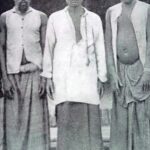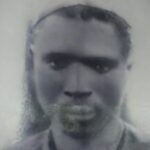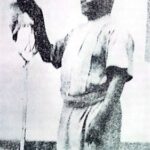NAWEJ a DITEND
- 2 Min Read
Nawej a Ditend (circa 1800-1852) ruled as the Lunda Mwant Yav (supreme chief) at a time when commercial and political relations between the Lunda and Angolan peoples were intensifying.

PHOTO CAPTION: Nawej a Ditend SOURCE: EA Library
The son of Ditend and grandson of Mwant Yav Chikomb, Nawej assumed power, perhaps in about 1810, after succession struggles in which he fought Isindji and Mulaj who were also candidates for the throne.
Trade between the Lunda empire and Angola increased during his reign. Luso-African caravans began visiting Musumba, the Lunda capital, situated 240km (150 mi) north of what is now Dilolo. Leaders of these groups were Manuel Gomes Sampaio (Campacala), Romao, Antonio Bonifacio Rodrigues, Francisco Pacheco, and Joachim Graca (who remained at Musumba from 1843 to 1846), a trader from Golungo Alto (who stayed from 1846 to 1847), Lourenco Bezzera Corraia Pinto, (who established an agricultural plantation in 1850).
In the 1840s the price of slaves declined while the price of ivory increased dramatically. To increase his ivory production, Mwant Yav Nawej a Ditend called on help from Cokwe (Chokwe) hunters, whose settlement in southern Lunda lands often caused frictions that degenerated into conflicts with local Lunda chiefs. Mwant Yav Nawej a Ditend’s intervention temporarily brought a precarious period of peace.
Mwant Yav Nawej’s commercial methods were troubling both to his subjects and to the visiting traders. Supposedly, all the commercial dealings within Lunda territory were under the monopolistic control of Mwant Yav or the landed aristocracy. In consequence, many a trader suffered when he found his property confiscated as a fine by Nawej a Ditend. Likewise, local Lunda villages were pillaged, since Nawej often “paid” for trade goods by allowing Angolan merchants to raid villages which had not paid enough tax to the Mwant Yav.
When he died in 1852, Mwant Yav Nawej a Ditend had gained a reputation cruel, harsh ruler.
N’DUA SOLOL KANAMPUMB





